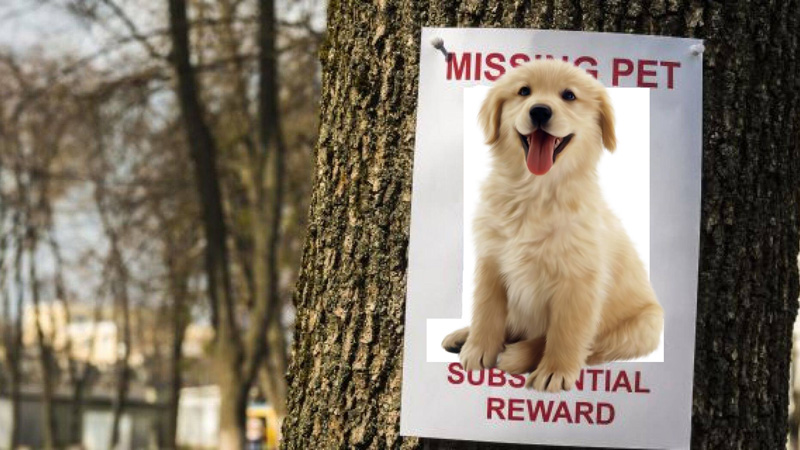Chances are that at some point when you are out and about you will come across a lost dog. Any dog lover will want to do something to help, but what? The best answer I can give is “it depends”. Assess the situation before you attempt to approach the dog. Is the dog showing signs of fear (tail tucked under the body, ears back)? Are there any signs the dog is hurt? Does the dog look happy (tail wagging, ears relaxed)? How big is the dog? If you feel OK with what you see, I suggest you take a photo of the dog before you approach it just in case the dog runs off once you start to approach. At least by having a photo, you can post it on social media together with the location of the dog when you first saw it and the day/time.
When approaching a lost dog, don’t rush, stay calm, speak gently, stay low to the ground and avoid prolonged eye contact. If possible, try to approach from the side rather than head on, as this might be considered by the dog to be threatening. The object is to win the dog’s confidence. As you did when first assessing the situation, so the dog is evaluating you as a potential threat. If the dog is OK with what it’s sensing, it will approach you or let you approach it, at which point you can check for an ID tag. Depending on the type of tag it has, you may get lucky and be able to contact the dog’s owner straight away. If the dog is wearing only a tag issued by the city, there will only be a tag number so contact with the city will be necessary to establish who the dog’s owner is.
In a situation where the dog has no ID tag or obvious means of identification, the next steps will depend on how the dog is behaving. If it becomes leery of you or aggressive, call animal services or the RCMP as they will have experience in handling dogs. Try to prevent the dog bolting before help arrives by talking calmly to the dog.
If the dog is OK being around you, and there are no hygiene concerns on your part, try getting the dog gently into your vehicle. Your options as to where to take the dog will vary depending on the time of day and/ or the day of the week.
Options include:
- A local veterinary clinic: they will be able to check if the dog has been microchipped.
- An animal shelter. They should be able to check for a microchip and will be able to take care of the dog, if only for a short period.
- Home: this option may depend on whether you have other pets or your willingness to have an unknown dog in your family space.
Don’t forget that inevitably there is an owner out looking for their lost pet or one that is completely unaware that their dog is missing. Any form of advertising, be it printed signage, phone calls to friends or social media, will help in bringing together the lost dog and its owner.
Thank you for caring!







